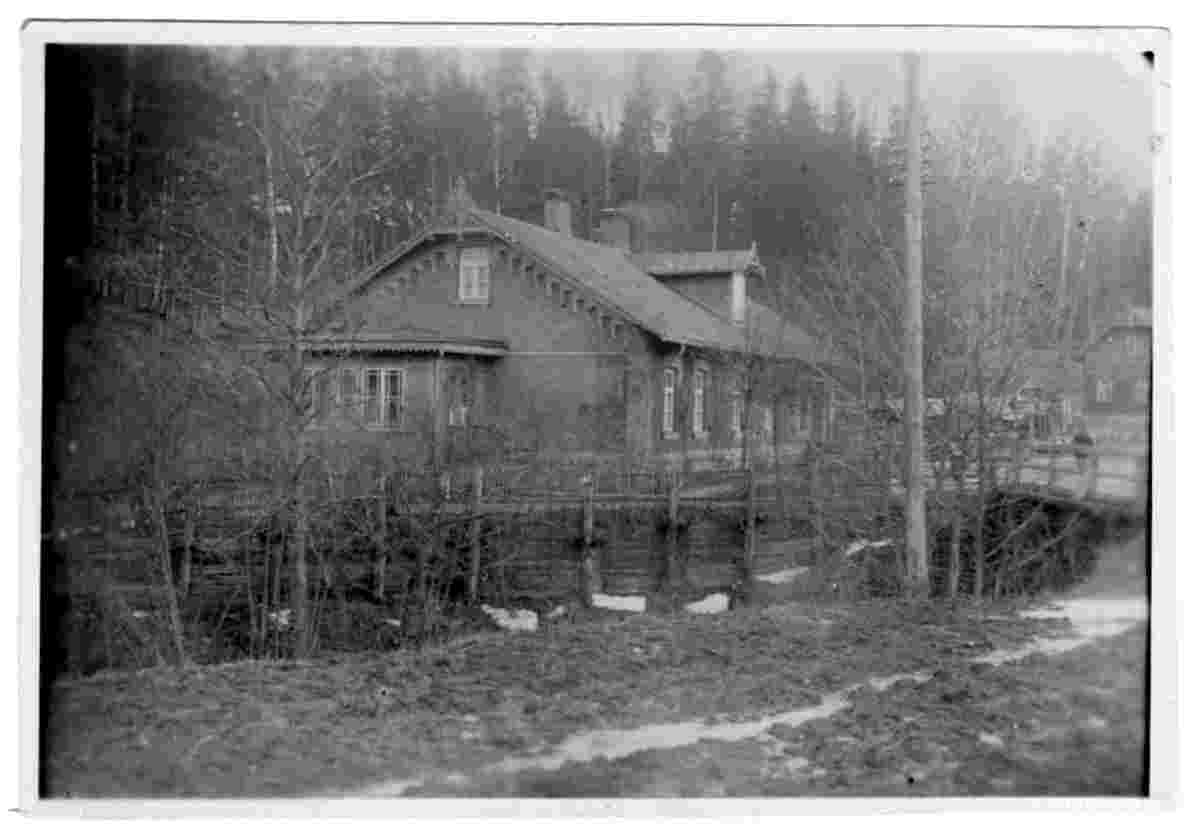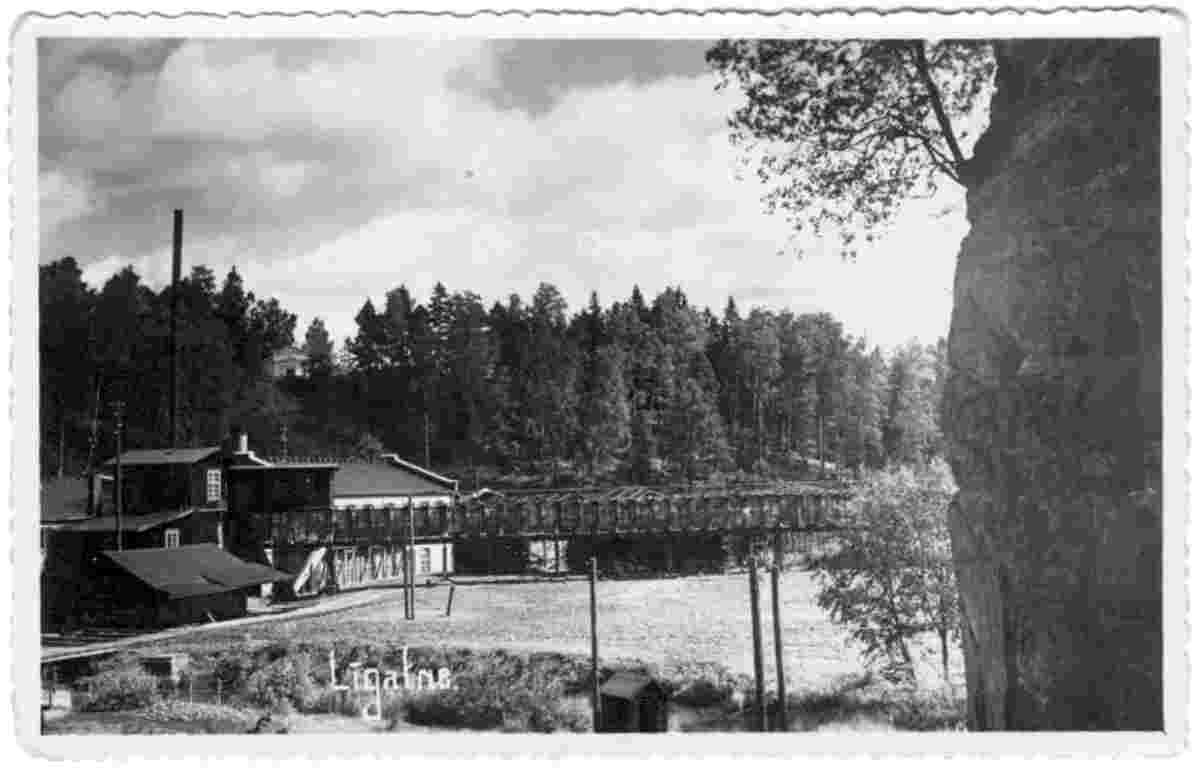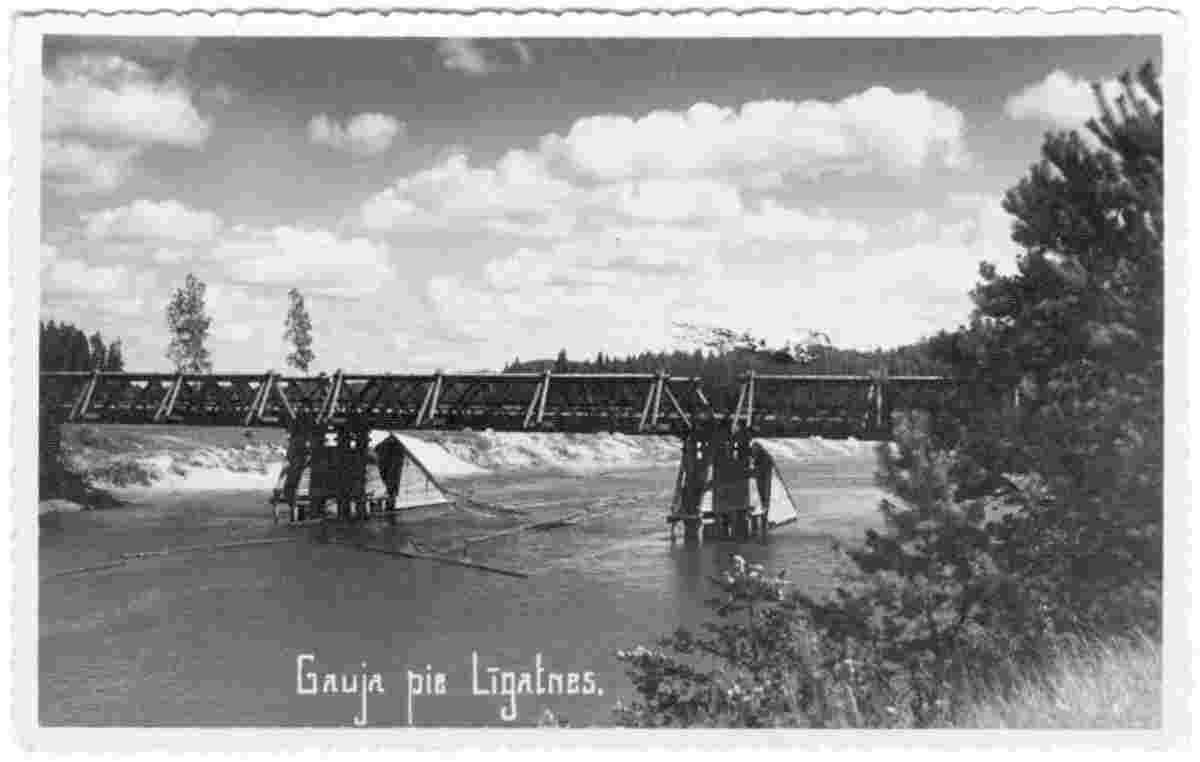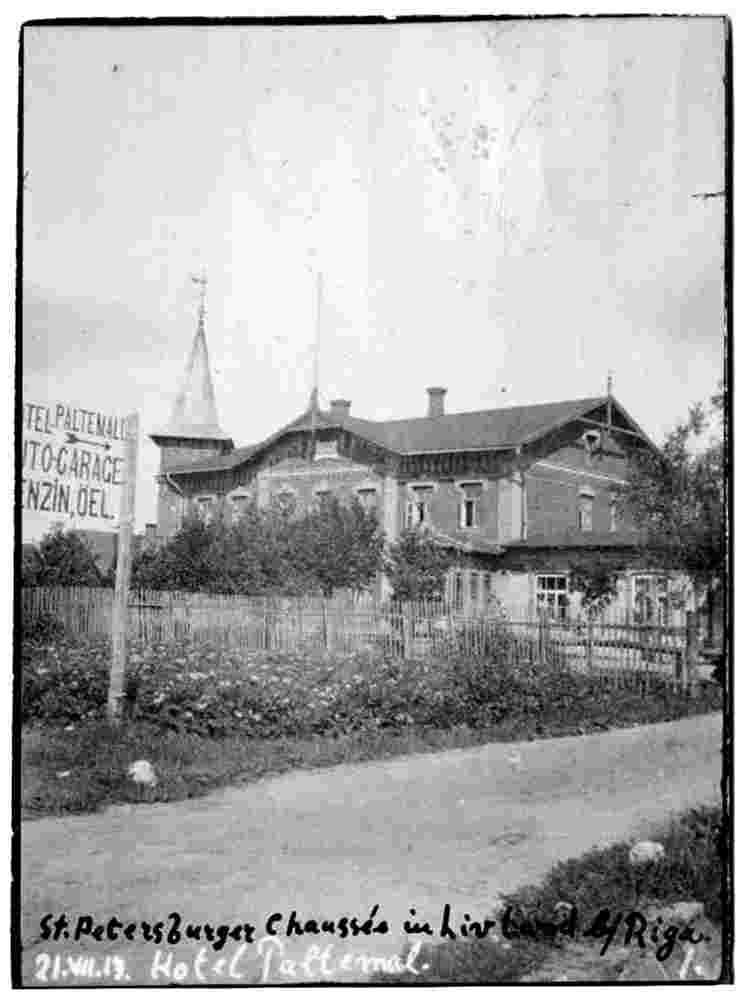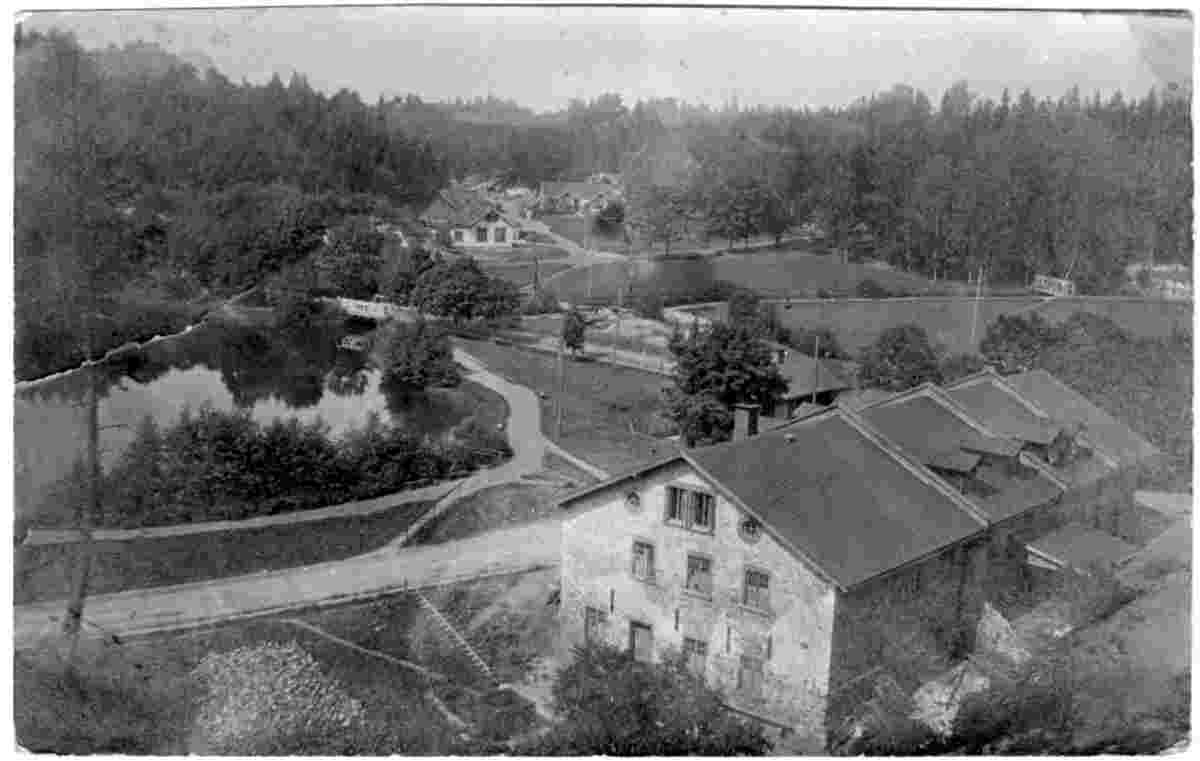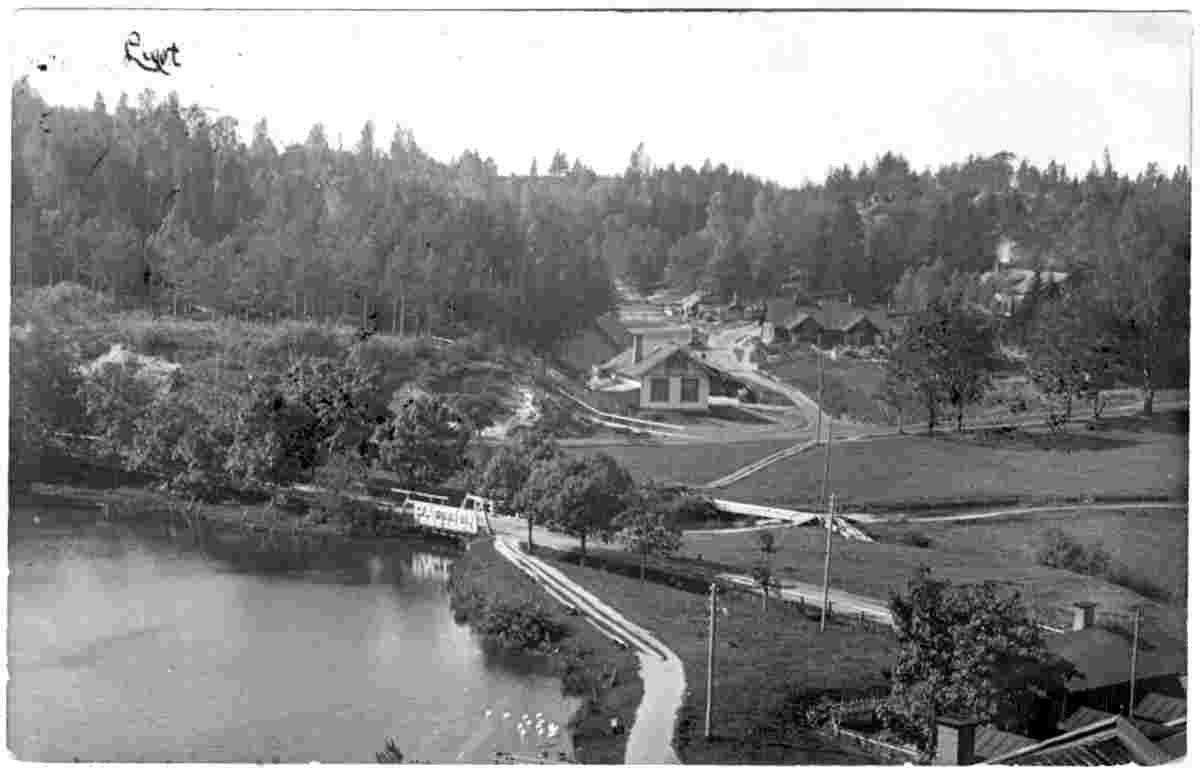Historical and old photos of Ligatne (german - Ligat)
HistoryThe village grew up around a paper mill, which was founded in 1815 by Justus Storch. In 1864 the AG Rigaer Papierfabriken bought the Ligat paper mill. At the end of the 19th century, workers' settlements, a hospital, a cultural center, kindergarten and other facilities were built around the factory. In a social model that was unique at the time, workers were granted free housing, heating, electricity, child rearing, pensions, etc. An upper district developed on the Riga-Pleskau road. Tourist attractions are today a nature park with outdoor enclosures for native wildlife, a Soviet bunker built for the government of the LSSR, the former factory, a wooden car ferry across the Gauja and the Gūdu rocks. History of the paper millThe village is closely connected to the paper mill located there. A contemporary witness report describes the workers' privileges at the beginning of the 20th century: “The Ligat workers earned ... cash cash wages from the 12-hour work that was common at the time, roughly as much as was paid in industry in the Riga district. But they enjoyed a lot of benefits that were missing in the city: free housing and heating, whereby firewood was available as much as they needed. Then: free medical treatment and medication. There were no state health insurance companies at the time, so there were no deductions from wages. In Ligat there was a hospital with 8 beds, ... There was also a very well equipped ... very well looked after maternity hospital. Old Dr. Vogel, who lived about 5 km from Ligat, came to the factory twice a week, and the medical assistant lived on the spot ... In addition, people had free school for all children, as part of elementary school. All school supplies free. The school was divided into 3 classes, the lessons were given by 3 teachers, ... I did not know whether and how much wage tax was charged. I do not think so; because there was no income tax at that time either ”. Paper production in Līgatne was stopped during the First World War, the paper machines were dismantled and brought to Russia. In 1920, the new government of the Republic of Latvia provided 20 million Latvian rubles to rebuild the factory and start paper production again. In the 1920s and 1930s, the Līgatne paper mill had the most modern paper production facilities in Europe and was one of the best fine and specialty paper factories. Production was stopped again during the Second World War and resumed on 3 paper machines in February 1945. During a fire in 1993, the factory partially burned down and was rebuilt through donations. In 2000 it was named SIA "PAPĪRFABRIKA LĪGATNE" Ltd. registered as a GmbH. Bankruptcy had to be registered in 2014. Origin: en.wikipedia.org | ||||||||||||
 |
Historical and old photos of Ligatne (german - Ligat)
Līgatnes vēsturiskās un senās fotogrāfijas (vāciski - Līgat) |
| Main page • Countries of Europa • Cities of Latvia |
| Robinson Rd, CB 13862 Nassau, NP, The Bahamas |
